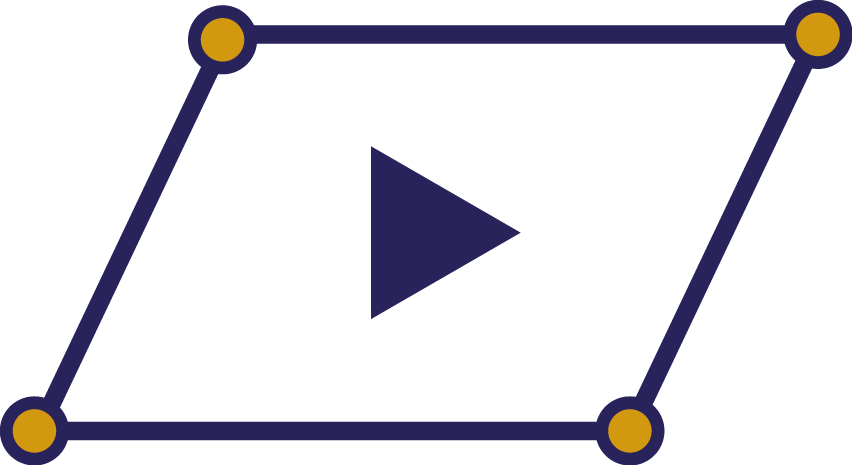communication systems
topics:
1. broadcasting
2. internet networks and community intranets
3. community cellular telephony
4. hf radio
1. broadcasting
2. internet networks and community intranets
3. community cellular telephony
4. hf radio
1.
broadcasting
Description:
Community radios continue to be one of the most used media in communities, their potential for the dissemination of messages is key, as it is anchored in their organizational forms. The purpose of these courses is to enable people to be in charge of the technical operation of a community radio station as well as to provide them with the necessary knowledge and skills to handle the hardware and software used in this type of media.
Some of the contents to be covered include: basic concepts of Broadcasting, radio-frequency, modulation, transmitters and antennas, booth installation and maintenance.
Subtopics:
Reference materials
Community radios continue to be one of the most used media in communities, their potential for the dissemination of messages is key, as it is anchored in their organizational forms. The purpose of these courses is to enable people to be in charge of the technical operation of a community radio station as well as to provide them with the necessary knowledge and skills to handle the hardware and software used in this type of media.
Some of the contents to be covered include: basic concepts of Broadcasting, radio-frequency, modulation, transmitters and antennas, booth installation and maintenance.
Subtopics:
- Basic concepts of broadcasting.
- Installation and maintenance of radio booth equipment.
- Characteristics, types and measurement of antennas.
- Maintenance, repair, assembly and calibration of radio transmitters.
- Free Software for community radio.
Reference materials
- Manual for Non-Technical Radio Operators (García Gago, 2013). [in Spanish]
- Module VII and VIII of the Popular Communication School of the Peoples (COMPPA, 2012). [in Spanish]
- Online course: Free your radio! from the Community Radio and Free Software Network. [in Spanish]
- Materials and digital tools from the Libera tu Radio website. [in Spanish]
- EterTICs GNU/Linux distribution. [in Spanish]
- Documentary: Voices in Community (Ojo de Agua Comunicación, 2017). [in Spanish]
2.
community internet networks and intranets
Description:
Community networks are projects related to communication and access to information in which the people living in a given territory organize themselves to generate their own telecommunications networks in accordance with their way of life, work, and knowledge sharing. In recent years, this type of networks have been implemented as a strategy by a wide range of communities to connect in an autonomous, relevant and affordable way, with quality of service and digital security.
The goal of these courses is to provide the necessary knowledge to install, maintain, secure, and update networks for low-cost wireless data transmission suitable for long-distance links. Through critical reflections and practical exercises, the necessary knowledge is shared for the implementation of community networks that can be sustainable over time.
Subtopics:
Reference materials
Community networks are projects related to communication and access to information in which the people living in a given territory organize themselves to generate their own telecommunications networks in accordance with their way of life, work, and knowledge sharing. In recent years, this type of networks have been implemented as a strategy by a wide range of communities to connect in an autonomous, relevant and affordable way, with quality of service and digital security.
The goal of these courses is to provide the necessary knowledge to install, maintain, secure, and update networks for low-cost wireless data transmission suitable for long-distance links. Through critical reflections and practical exercises, the necessary knowledge is shared for the implementation of community networks that can be sustainable over time.
Subtopics:
- Introduction to wireless networks.
- Wireless stations configuration.
- Wireless network design and planning.
- Point-to-point connections.
- Mesh networks.
- Free hardware and software tools for community networks..
- Autonomous community servers.
- Organizational, technical, economic and social challenges of community networks.
- Community network experiences in the world.
Reference materials
- Wireless Networks in Developing Countries (WNDW, 2013). [in Spanish]
- ItrainOnline Multimedia Training Kit (MMTK) of the TRICALCAR project. [in Spanish]
- Community Networks in Latin America: Challenges, Regulations and Solutions (Baca, Belli, Huerta and Velasco, 2018).
- Protocol for Accompanying the Deployment of Community Networks in Scenarios of Social Isolation (Altermundi, 2020).. [in Spanish]
- Altermundi video tutorials.. [in Spanish]
- LibreMesh website. [in Spanish]
- LibreRouter website. [in Spanish]
- Global Information Society Watch: Community Networks (APC, 2018).
- Website about Community Intranets (REDES A.C., 2020).. [in Spanish]
- Documentary: Communities making Internet. Quintana Libre's experience in Argentina (Altermundi, 2020).. [in Spanish]
3.
community cellular telephony
Description:
The purpose of community cellular telephony networks is to create systems, either with or without their own infrastructure, that provide connectivity and communication through mobile devices.
Due to their technical characteristics and regulatory needs, there are very few experiences of this sort in the world, and they are concentrated mainly in Mexico. This type of community network has required a series of technical innovations and strategies for sustainability and political advocacy that demonstrate the possibility of generating relevant telecommunications services in line with the communication needs of the communities.
There are two types of networks of this nature:
Subtopics:
The purpose of community cellular telephony networks is to create systems, either with or without their own infrastructure, that provide connectivity and communication through mobile devices.
Due to their technical characteristics and regulatory needs, there are very few experiences of this sort in the world, and they are concentrated mainly in Mexico. This type of community network has required a series of technical innovations and strategies for sustainability and political advocacy that demonstrate the possibility of generating relevant telecommunications services in line with the communication needs of the communities.
There are two types of networks of this nature:
- Networks that have their own infrastructure: in Mexico, Telecomunicaciones Indígenas Comunitarias A.C. is the organization that has the concession for the use of frequencies. As of 2022 there has been a migration process of these networks to 4G technology. Decisions about the network are made through the assembly of members in which they participate. Although this type of network requires changes in the legislation of most countries, there are already other initiatives of similar projects, such as the experimental concessions being developed in Cauca, Colombia.
Trainings on this type of networks are given within the framework of the installation or maintenance of equipment in real contexts, with communities that are or want to be part of the community cellular telephony network. In addition, the necessary interfaces and software are analyzed for the functioning, management and operation of the networks. -
Social and Community Mobile Virtual Network Operators (MVNO-SC): This type of community cellular networks do not have their own infrastructure, but can resell the service provided by telecommunications wholesalers. In Mexico, through Red Compartida, Wiki Katat of the Unión de Cooperativas Tosepan Titataniske is the first indigenous mobile virtual network operator in the world. Together with this cooperative, Telecomunicaciones Indígenas Comunitarias A.C., and with the own infrastructure networks it manages, will also offer services like MVNO since 2023.
This type of networks, although they do not have autonomy directly over the infrastructure, they allow the communities to focus on other fundamental aspects that contribute to the self-determination of the peoples, such as the creation and dissemination of their own content.
The courses related to this type of network are mainly focused on promoters, and cover topics such as the organizational structure of the network and the user management platform.
For either type of network, the process of setting up a network and the models of sustainability, organization and management of the networks is discussed during the training, while reflecting on the challenges and possibilities of this type of connectivity projects.
Subtopics:
- What is mobile technology and how does it work?
- Organizational and economic models of community cellular telephony.
- Incorporation process of new communities.
- Coverage analysis.
- Preparation, foundations and security at the radio base installation site.
- Preparation and assembly of equipment.
- Use of Rhizomatica Admin Interface (RAI) tool.
- Common failure detection and reporting.
- Use of MVNO user management platform.
- Sustainability model for MVNO-SC.
- Dissemination and preservation of proprietary content through an MVNO.
- Legal framework for the supply of telecommunication services in indigenous communities.
- Indigenous Community Telecommunications website [in Spanish]
- Community cellular telephony handbook. Connecting the next billion (Huerta and Bloom, 2017). [in Spanish]
- GSM technical documentation on the Wiki of Rhizomatica. [in Spanish]
- Infographic: This is how the community cell phone network works (TIC A.C.). [in Spanish]
- Video: Differences between commercial and community telephony (TIC A.C., 2019). [in Spanish]
- Course on mobile technologies (Salazar, s/f). [in Spanish]
- Osmo-gsm-manuals
- TV program: Indigenous telephony - In defense of the right to communication (DW, 2019). [in Spanish]
- Story: Talking over the air (Desinformémonos, 2015). [in Spanish]
- Video: INC Colombia Network (Colnodo, 2019). [in Spanish]
- TV program: Debate 22: Indigenous and community communication and technology (Canal 22, 2019). [in Spanish]
- WikiKatat website. [in Spanish]
- What is a mobile virtual network operator and what is the history of these networks? [in Spanish]
- Sin Embargo's article on WikiKatat [in Spanish]
- Interview about WikiKatat on TV UNAM. [in Spanish]
4.
HF radio
Description:
High Frequency (HF) refers to the radio spectrum band between 3 and 30 megahertz or MHz, where electromagnetic waves propagate in a straight line, and bounce at different heights in the sky (the higher the frequency, the greater the height), which allows signals to reach distant points.
Because of these characteristics, HF radio has been used for decades to communicate in remote areas isolated from urban centers. It is an economical and easy to use technology that people have used for many years before any other type of communication reached certain areas.
Based on this technology, Rhizomatica has developed the High Frequency Emergency and Rural Multimedia Exchange System (HERMES) that enables data transmission over shortwave (HF) radio.
This open source technology, provides affordable digital telecommunications services over shortwave/HF radio using a simplified visual interface accessed through a smartphone or computer, enabling secure transmission and reception of data (chat, audio, documents, photos, GPS coordinates, etc.).
Since 2019, Rhizomatica has been working in Amazonian communities in Ecuador, Brazil, Peru, Bolivia, and in highland areas such as Chihuahua, Mexico, training the inhabitants of these territories to first install an HF radio. This subsequently allows the installation of the HERMES system because they use the same infrastructure, such as the antenna and the solar energy array.
Subtopics:
High Frequency (HF) refers to the radio spectrum band between 3 and 30 megahertz or MHz, where electromagnetic waves propagate in a straight line, and bounce at different heights in the sky (the higher the frequency, the greater the height), which allows signals to reach distant points.
Because of these characteristics, HF radio has been used for decades to communicate in remote areas isolated from urban centers. It is an economical and easy to use technology that people have used for many years before any other type of communication reached certain areas.
Based on this technology, Rhizomatica has developed the High Frequency Emergency and Rural Multimedia Exchange System (HERMES) that enables data transmission over shortwave (HF) radio.
This open source technology, provides affordable digital telecommunications services over shortwave/HF radio using a simplified visual interface accessed through a smartphone or computer, enabling secure transmission and reception of data (chat, audio, documents, photos, GPS coordinates, etc.).
Since 2019, Rhizomatica has been working in Amazonian communities in Ecuador, Brazil, Peru, Bolivia, and in highland areas such as Chihuahua, Mexico, training the inhabitants of these territories to first install an HF radio. This subsequently allows the installation of the HERMES system because they use the same infrastructure, such as the antenna and the solar energy array.
Subtopics:
- Understanding the electromagnetic spectrum.
- Wireless communications.
- HF band frequencies.
- HF radio components and operation.
- HF radio power supply.
- HF radio antennas.
- HERMES System.






